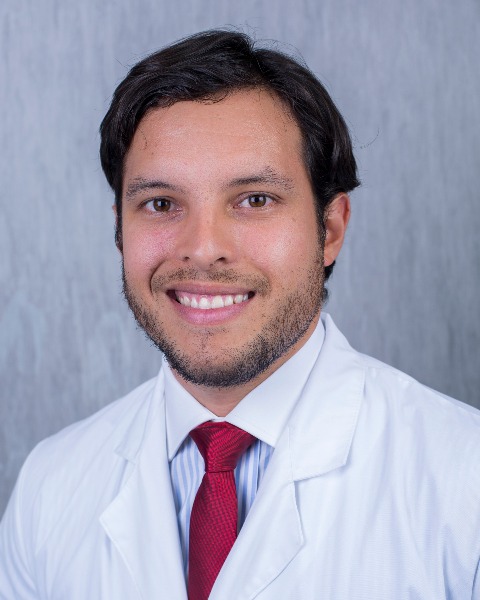Disparities in Surgical Oncologic Care
E134: Unveiling Melanoma: A Deep Dive into Disparities at a Latin-American Cancer Institute

Gonzalo j. Ziegler-Rodriguez, Surgical Oncology. Breast and Soft Tissue Tumors (he/him/his)
Attending Physician.
Instituto Nacional de Enfermedades Neoplasicas (INEN).
Lima, Lima, Peru
Gonzalo j. Ziegler-Rodriguez, Surgical Oncology. Breast and Soft Tissue Tumors (he/him/his)
Attending Physician.
Instituto Nacional de Enfermedades Neoplasicas (INEN).
Lima, Lima, Peru
Gonzalo j. Ziegler-Rodriguez, Surgical Oncology. Breast and Soft Tissue Tumors (he/him/his)
Attending Physician.
Instituto Nacional de Enfermedades Neoplasicas (INEN).
Lima, Lima, Peru- GD
Gabriel De La Cruz-Ku, MD
Resident
University of Miami Miller School of Medicine, University of Massachusetts Medical School, Massachusetts, United States - JT
Jorge Torres-Maldonado, MD
PGY-3 Breast and Soft Tissue Surgical Oncology Resident
Instituto Nacional de Enfermedades Neoplasicas (INEN), Lima, Peru, United States - JD
Jorge Dunstan-Yataco, MD
Chief, Surgical Oncology. Breast and Soft Tissue Tumors
Intituto Nacional de Enfermedades Neoplasicas (INEN), Lima, Peru, United States - JC
Jose Manuel Cotrina-Concha, Surgical Oncology. Breast and Soft Tissue Tumors
Attending Physician.
Instituto Nacional de Enfermedades Neoplasicas (INEN)., Lima, Peru - JG
Jose Antonio Galarreta-Zegarra, Surgical Oncology. Breast and Soft Tissue Tumors
Attending Physician.
Instituto Nacional de Enfermedades Neoplasicas (INEN)., Lima, Peru - GC
Gabriela Calderon-Valencia, Surgical Oncology. Breast and Soft Tissue Tumors
Attending Physician.
Instituto Nacional de Enfermedades Neoplasicas (INEN)., Lima, Peru - SV
Sheila Vilchez-santillan, Surgical Oncology. Breast and Soft Tissue Tumors
Attending Physician.
Instituto Nacional de Enfermedades Neoplasicas (INEN)., Lima, Peru - MP
Miguel Pinillos-portella, Surgical Oncology. Breast and Soft Tissue Tumors
Attending Physician.
Instituto Nacional de Enfermedades Neoplasicas (INEN)., Lima, Peru - MM
Mecker Moller, MD, Director Surgical Oncology Fellowship Program
Professor of Surgery
University of Chicago Pritzker School of Medicine, United States
ePoster Abstract Author(s)
Submitter(s)
Author(s)
Worldwide incidence of melanoma has increased in the last 40 years. Literature usually shows data from fair-skin cases and mentions that the non-Caucasic population has worse morbidity and mortality rates. Our aim was to describe the clinic pathological characteristics and outcomes of three cohorts of patients diagnosed with melanoma in a Latin-American cancer institute during the last 20 years.
Methods:
We evaluated three retrospective patient cohorts diagnosed with melanoma at Instituto Nacional de Enfermedades Neoplásicas (INEN) a public hospital in Lima, Peru, for the years 2005-2006, 2010-2011, and 2017-2018. We analyzed demographics, tumor characteristics, time to diagnosis and staging, and assessed survival rate differences using the Log-rank test.
Results:
584 patients were included in the analysis (only trunk & extremities), 51% male. The mean age was 61 (3-97) years, and 98% of them were of Hispanic ethnicity. Approximately 48% of the patients resided in rural areas. About half of them had biopsy and then referred to INEN for management. The mean time to diagnosis was 22.6 months, and the mean Breslow thickness was 7.4 mm (T3). One-third (30%) of the patients presented with Acral lentiginous subtype, with the lower extremity being the most common location (72%). A majority of the patients (55%) had metastases at the time of presentation, with 36% in Stage III and 19% in Stage IV, followed by 23% in Stage II and 8.0% in Stage I. Cohorts were distributed as follows: A) 2005-2006 (n=171), B) 2010-2011 (n=223), and C) 2017-2018 (n=190). Surgical management included wide local excision (30.6%, 50.3%, and 53.8%) and sentinel node biopsy (44.1%, 49.2%, and 53.1%). No immunotherapy was used. When comparing outcomes by location, worse overall survival (OS) rates at 3-years were observed in both the upper (91%, 92%, 58%, p< 0.01) and lower extremities (84%, 86%, 48%, p< 0.01) for Cohorts B and C. Cohort C exhibited the most significant increase in Stage IV diagnoses (12.3%, 15.7%, 28.4%, p< 0.01). The median OS rates at the 3-year follow-up demonstrated a decline over the years for stages II (97%, 98%, 57%, p< 0.05) and III (66%, 77%, 37%, p< 0.01). The median follow-up periods for the cohorts were 24.8, 23.8, and 19.3 months, respectively.
Conclusions:
There has been a worsening in the incidence of late-stage metastatic melanoma in Peru throughout the years, coupled with a significant decline in overall survival rates. This is underscored by the fact that half of the population lives in regions devoid of oncological access. Comprehensive public health interventions aimed at early diagnosis and treatment are urgently needed.
Learning Objectives:
- Upon completion, participants will be able to know how disparities in a latin american country like Peru suffers form locally advanced melanoma patients
- Upon completion, participants will be able to know how disparities in cancer care affect the outcomes of a disease like melanoma
- Upon completion, participants will be able to recognize that melanoma is a heterogenous disease throughout the world and needs more research to decrease the disparities in management
